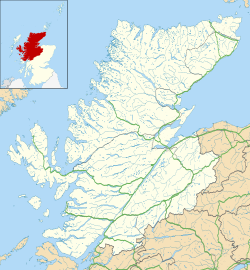| Bottacks | |
|---|---|
Location within the Highland council area | |
| OS grid reference | NH499591 |
| Council area | |
| Country | Scotland |
| Sovereign state | United Kingdom |
| Post town | Strathpeffer |
| Postcode district | IV14 9 |
| Police | Scotland |
| Fire | Scottish |
| Ambulance | Scottish |
Bottacks (Na Botagan in Scottish Gaelic) is a small scattered township, located 1.5 miles north north east of Strathpeffer, in Ross-shire, Scottish Highlands and is in the Scottish council area of Highland.
The village of Fodderty lies 1 mile to the east.
